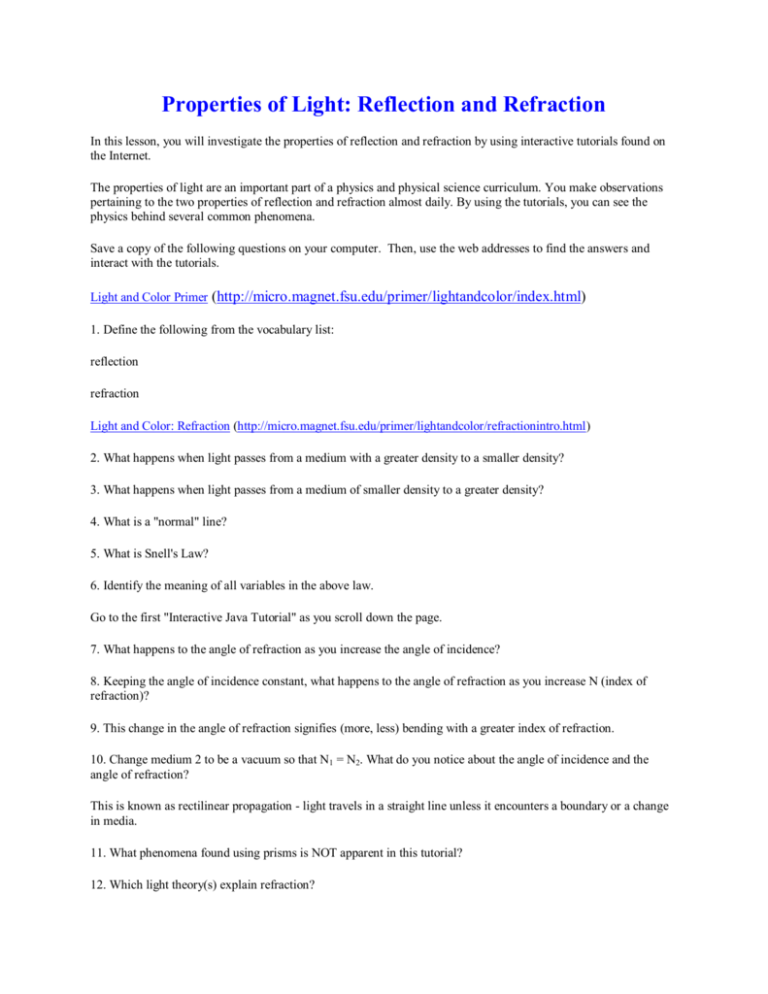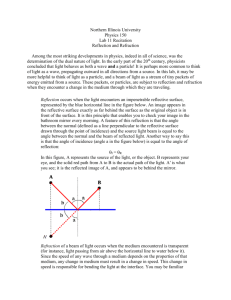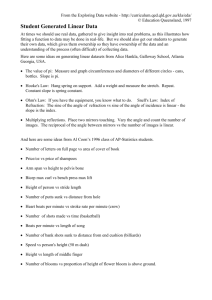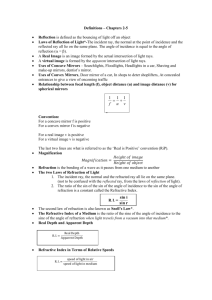properties of light worksheet - Easy Peasy All-in
advertisement

Properties of Light: Reflection and Refraction In this lesson, you will investigate the properties of reflection and refraction by using interactive tutorials found on the Internet. The properties of light are an important part of a physics and physical science curriculum. You make observations pertaining to the two properties of reflection and refraction almost daily. By using the tutorials, you can see the physics behind several common phenomena. Save a copy of the following questions on your computer. Then, use the web addresses to find the answers and interact with the tutorials. Light and Color Primer (http://micro.magnet.fsu.edu/primer/lightandcolor/index.html) 1. Define the following from the vocabulary list: reflection refraction Light and Color: Refraction (http://micro.magnet.fsu.edu/primer/lightandcolor/refractionintro.html) 2. What happens when light passes from a medium with a greater density to a smaller density? 3. What happens when light passes from a medium of smaller density to a greater density? 4. What is a "normal" line? 5. What is Snell's Law? 6. Identify the meaning of all variables in the above law. Go to the first "Interactive Java Tutorial" as you scroll down the page. 7. What happens to the angle of refraction as you increase the angle of incidence? 8. Keeping the angle of incidence constant, what happens to the angle of refraction as you increase N (index of refraction)? 9. This change in the angle of refraction signifies (more, less) bending with a greater index of refraction. 10. Change medium 2 to be a vacuum so that N1 = N2. What do you notice about the angle of incidence and the angle of refraction? This is known as rectilinear propagation - light travels in a straight line unless it encounters a boundary or a change in media. 11. What phenomena found using prisms is NOT apparent in this tutorial? 12. Which light theory(s) explain refraction? Light and Color: Reflection (http://micro.magnet.fsu.edu/primer/java/reflection/reflectionangles/index.html) 13. What is true about the angle of incidence and the angle of reflection? 14. As you vary the angle of incidence, what happens to the angle of reflection? 15. Adjust the wavelength by increasing or decreasing it. What effect does this have on the relationship between the angles of incidence and reflection? 16. Which light theory(s) explain reflection?








